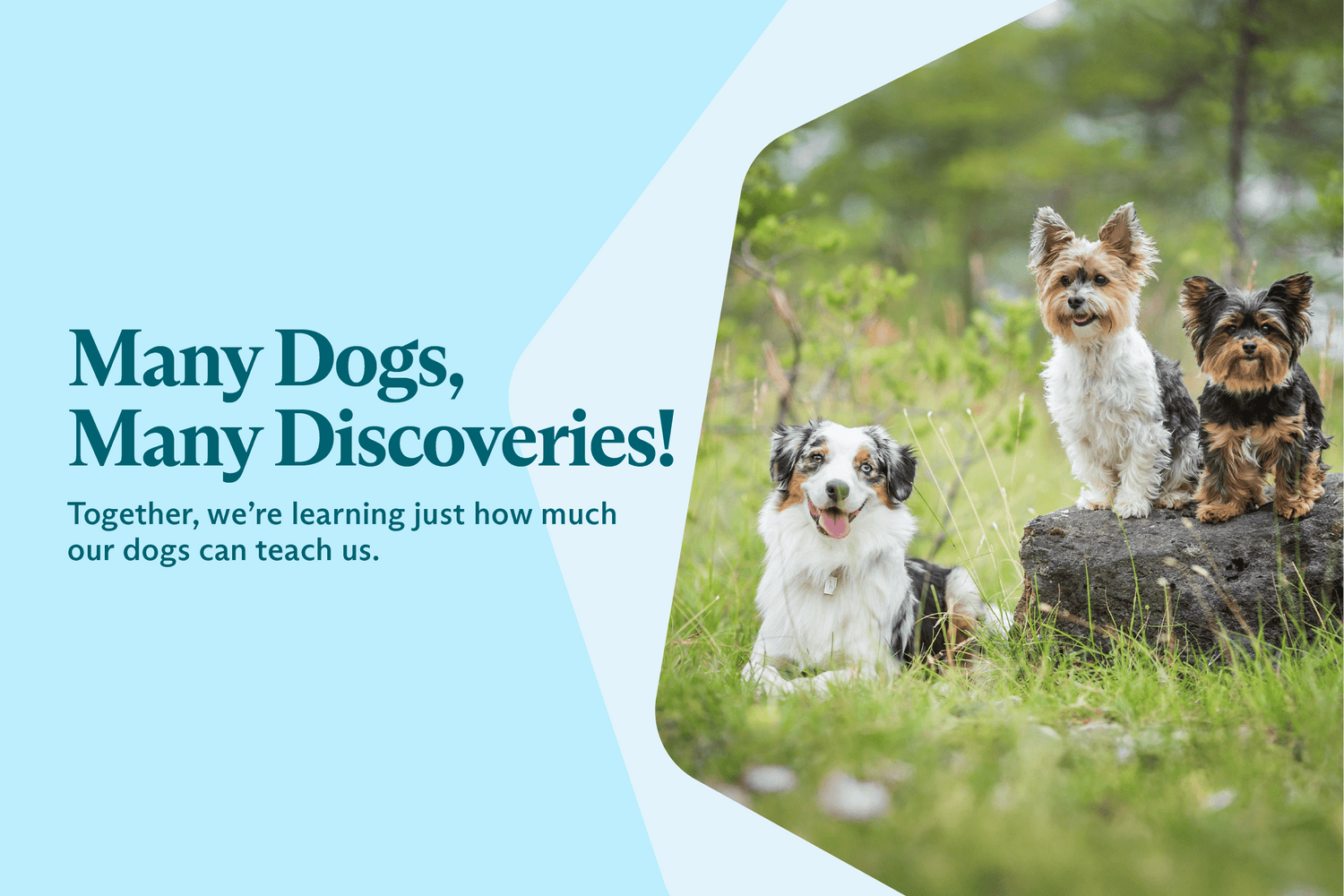As a researcher, I depend on working collaboratively with colleagues across many disciplines, and I wouldn’t have it any other way! I love the ideas that spark and the opportunities that arise when we come together with our own particular interests, experiences, and expertise to create something bigger than we’d ever imagine possible at our own labs and desks. And, given the nature of my work, we’re never short of furry research assistants, which makes it even better. In addition to the Dog Aging Project, one of the large collaborations that I work on is the ManyDogs Project, which, yes, does involve many dogs, but also many awesome humans.
Reproducibility, Replicability, & Robustness: The “Many” Projects
For a long time, the core tenets of scientific inquiry have demanded that for study results to be accepted as valid, they need to be verifiable. That is, if I told you that my dog could speak five languages and that I had systematically tested him on this through careful observation and data gathering, these claims would need to be provable by someone other than myself.
The two main issues at hand when it comes to verifying and validating scientific claims are reproducibility (obtaining consistent results using the same input data, methods, and analyses) and replicability (obtaining consistent results across studies looking at the same question but using their own data) (1).
Today, although it is sometimes difficult to define these standards across fields given the broad range of new technologies and methodologies that different kinds of scientists use, “good” science is still conducted with these tenets in mind.
When it comes to studying animal behavior, both reproducibility and replicability have historically been a challenge because, even when it comes to something we “know” to be true, our data are often reliant on small samples of animals, individual case studies, and point-in-time behavioral observations. This can become more complicated because we often generalize what we know about behavior and cognition to apply to our understanding of many different species.
Big Team Science
An approach known as “Big Team Science” (2), wherein many researchers collaborate to pool their collective knowledge and resources toward a shared investigation, is one way that scientists are trying to overcome some of the roadblocks to producing verifiable data. This approach has resulted in the development of large-scale projects aimed at gaining more concrete evidence and enhancing scientific processes around our understanding of animal behavior and cognition. Modeled after a big team science project known as ManyBabies, which focuses on replication and best practices in developmental psychology research, there are now several global consortiums of researchers working together to study various aspects of how and why different animal species think, act, and learn — these projects are the “manys”, ManyPrimates, ManyBirds (3), ManyFishes, ManyDogs, ManyPigs, and even the ManyManys, focused on reproducibility and replicability in comparative cognition and behavior studies across animal groups.
The ManyDogs Project
Can dogs solve complex puzzles? What do dogs think when they receive certain cues and gestures from humans? Why do some dogs respond to signals in ways that other dogs do not? Can dogs understand human language?
Dog science researchers launched The ManyDogs project (4) in order to use a systematic approach to address questions about canine behavior and cognition that were previously unanswerable, or produced mixed or inconclusive results when investigated.
Through their first big investigation, ManyDogs1 (MD1), 74 researchers from 20 dog cognition labs around the world came together to try to shed light on a topic we are all familiar with, pointing (5)! In particular, their goal was to try to determine how dogs interpret what we are doing when we humans point at things. All of the labs that participated used the same standardized methods that enabled them to study more than 450 dogs!
What did they learn?
Dogs weren’t great at following the point: Although they did pay attention to people’s pointing, it didn’t necessarily help them find hidden food that people were pointing to.
Obvious cues weren’t key: Whether a person made eye contact and said the dog’s name before pointing or did not make eye contact and simply cleared their throat before pointing did not greatly influence how dogs responded to the point gesture.
Information or a directive? While dogs can and do follow points, the results were unclear as to whether they interpret pointing gestures as information sharing or a command.
A New Study from the ManyDogs Team
Armed with lessons learned from developing the protocol for MD1, the ManyDogs international consortium is back at it again.
For ManyDogs2 (MD2), the group is once again applying rigor to method standardization for reproducibility and replicability as they explore overimitation in dogs. Overimitation occurs when an individual copies actions that are unnecessary to achieve a goal (such as a person tapping a door before unlocking it because they observed another individual doing so).
The ManyDogs team wants to know, do dogs overimitate people when we teach them things? The study adapts the dot-touching task from the Clever Dog Lab, where dogs are shown demonstrations of both irrelevant (touching colored-paper dots) and relevant (opening a bucket to access food) actions.
In particular, they’ll be looking at how social factors, such as affiliation and attachment, affect dogs' social learning and overimitation behavior.
This study asks:
Are dogs more likely to overimitate actions demonstrated by their caregiver or a stranger?
Do other factors, like breed-type, age, sex, and attachment level to the caregiver may influence these behaviors?
As highly social animals, dogs have evolved to understand people in ways that are unique among other species, and, as we know, can learn through observation. The ManyDogs Project and others like it represent an exciting new frontier for research that helps us better understand and connect with these animals we live with and love.
Biogliography:
Courtney Sexton is a Postdoctoral research scientist at the Virginia-Maryland College of Veterinary Medicine and has a PhD in Evolutionary Anthropology and Comparative Animal Behavior from The George Washington University.




Leave a comment
This site is protected by hCaptcha and the hCaptcha Privacy Policy and Terms of Service apply.